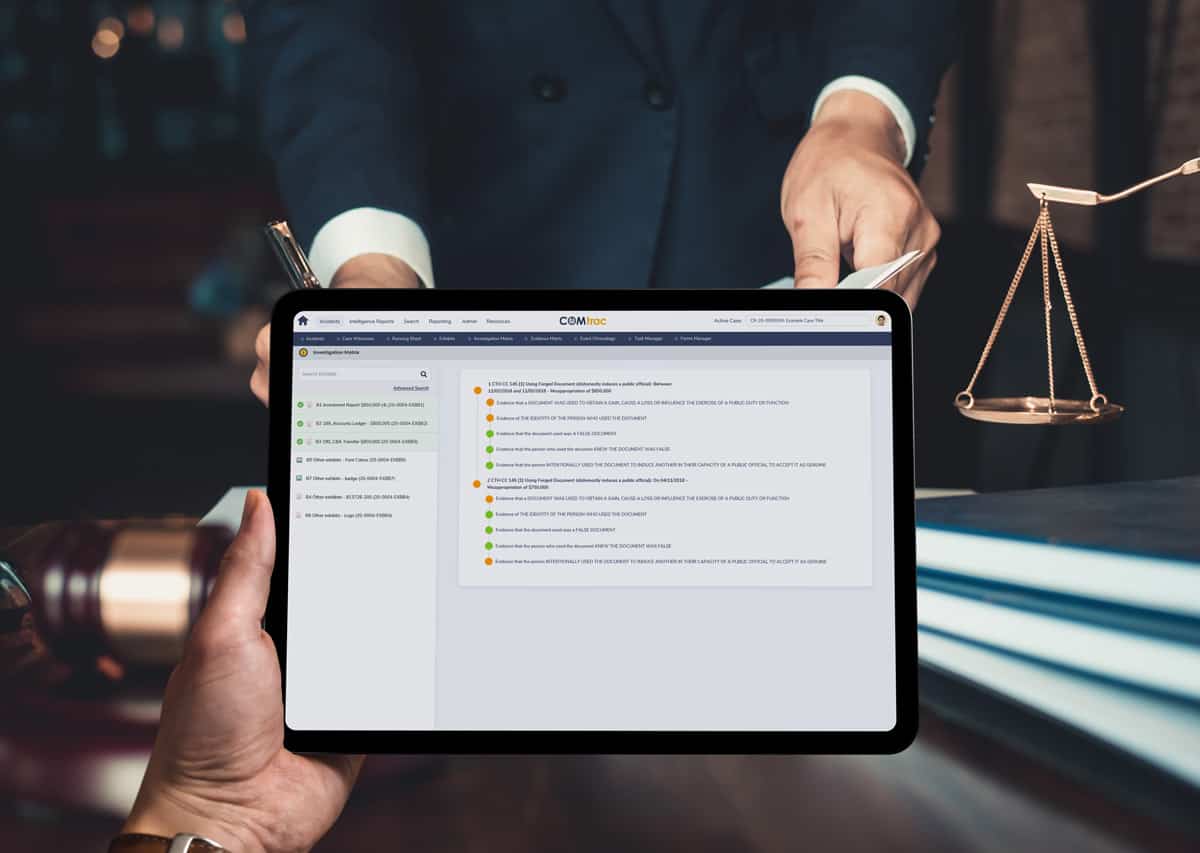Public prosecution investigations are unique. Those investigating these matters face a number of challenges, from gathering evidence through to compiling high-quality briefs of evidence to legal representatives and prosecution.
In this article, we discuss why prosecutions are routinely a very time-consuming exercise of preparation and proceedings, and how your investigative team can efficiently conduct their investigations.
Know Where the Prosecutor’s Time and Resources Are Spent
A significant amount of a prosecutor’s time and resources are spent analysing how the elements of the offences have been proven. In other words, confirming the relevance of evidence and witnesses, and preparing strategies to present that evidence in proceedings.
The actual presentation of evidence in the proceedings only constitutes a fraction of the prosecutor’s time and resources allocated to a particular case.
The Implications for the Brief of Evidence
Including evidence analytics significantly reduces the time prosecutors spend analysing and preparing for proceedings. For example, clearly mapping the relevance of evidence and witnesses to the elements of the offences in addition to a chronology of events with associated exhibits.
“If the brief of evidence received by prosecutors already had some form of evidence analytics, then the time spent by prosecutors analysing and preparing for proceedings significantly decreases,” said COMtrac’s CEO, Craig Doran.
The Book Review Analogy
Another way to look at it is the analogy of writing a book review to present to an audience. Consider the following two options. Which is the most efficient way to get the book delivered to the audience?
Option 1: The author delivers the book to the presenter. The presenter reads the entire book, analyses the relevant areas of the book, then prepares the book review.
Option 2: The author of the book delivers both the book and the analysis of the book to the presenter. The presenter then confirms the analysis and prepares the book review. Clearly, the workflow outlined in option 2 is more efficient.
In other words, investigators are the authors of briefs of evidence. Prosecutors are the reviewers and presenters of the brief to proceedings.
The Future of Prosecution Investigation Management
Public prosecution is under increased pressure with complexities of briefs of evidence and the increasing number of prosecutions. Craig outlined.
“There are realistically only two options for relieving these pressures; increase the number of prosecutors or improving efficiency in the process of preparation for prosecution.”
“One of these solutions would have a significant increase in human resource cost. The other can be achieved through a simple change of investigation and evidence management methodologies known as Elementising Evidence,” he added.
COMtrac’s investigation management software assists you in providing high-quality digital briefs of evidence to legal representatives and prosecution. By using the pre-determined elements, the prosecution can be confident that the briefs are high quality.
“COMtrac’s Elementising Evidence workflow allows investigators to easily assess the strength of the elements of the case and adjust resources as required. It can be fully configured based on the scope of the investigation,” Craig explained.
COMtrac automatically generates the brief of evidence, reducing the time, resources and costs associated with each investigation.
Learn more about how COMtrac’s investigation management software benefits public prosecution investigators here.
With COMtrac as your investigations partner, have confidence that your team is providing high-quality briefs of evidence to legal representatives and prosecution. Our investigation management software automatically generates your digital briefs of evidence, reducing the time, resources and costs associated with each investigation.



